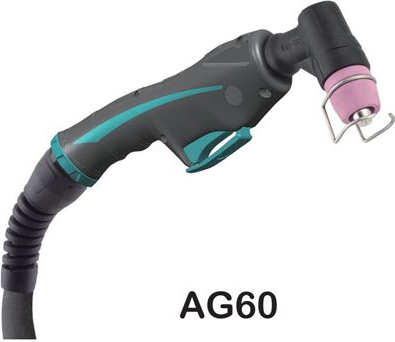A plasma cutter is a machine that is commonly found in metal fabrication shops that allow the user to cut metal in any way they please. It&rsquo's a machine that takes input power (110v or 220v) and processes it through a machine in a way that allows you cut virtually any type of metal using the torch of the machine to make very precise cuts. Plasma cutters give you the ability to look at any piece of metal and cut it to your liking in a very safe manner. The plasma cutter is to metalworking as the chainsaw is to cutting down trees. Sure you can use other tools to get the job done, but the plasma cutter just does it so much better.

Plasma Cutter
Principle of plasma cutting
Plasma cutting (plasma arc cutting) is a melting process in which a jet of ionized gas at temperatures above 20,000° C is used to melt and expel material from the cut. During the process, an electric arc is struck between an electrode (cathode) and the workpiece (anode). The electrode is recessed in a water- or air-cooled gas nozzle which constricts the arc causing the narrow, high-temperature, high-velocity plasma jet to form.
When the plasma jet hits the workpiece, recombination takes place and the gas reverts to its normal state, emitting intense heat as it does so. This heat melts the metal and the gas flow ejects it from the cut. Plasma gases are usually argon, argon/hydrogen, or nitrogen. These inert gases can be replaced by air but this requires a special electrode of hafnium or zirconium. The use of compressed air makes this variant of the plasma process highly competitive with the oxy-fuel process for cutting carbon-manganese and stainless steel up to 20mm thick. Inert gases are preferred for high-quality cuts in reactive alloys.

Plasma Cutting Torch
Plasma arc can cut a very wide range of electrically conductive alloys including plain carbon and stainless steel, aluminum and its alloys, nickel alloys, and titanium. The method was originally developed to cut materials that could not be satisfactorily cut by the oxy-fuel process.
Normally, the component or sheet to be cut remains stationary and the plasma torch is moved. Additionally, because the cost of the plasma torch is low compared with the price of the manipulation equipment, it is common to fit several torches to a cutting table. Plasma arc cutting can also be carried out underwater using specialized equipment.







